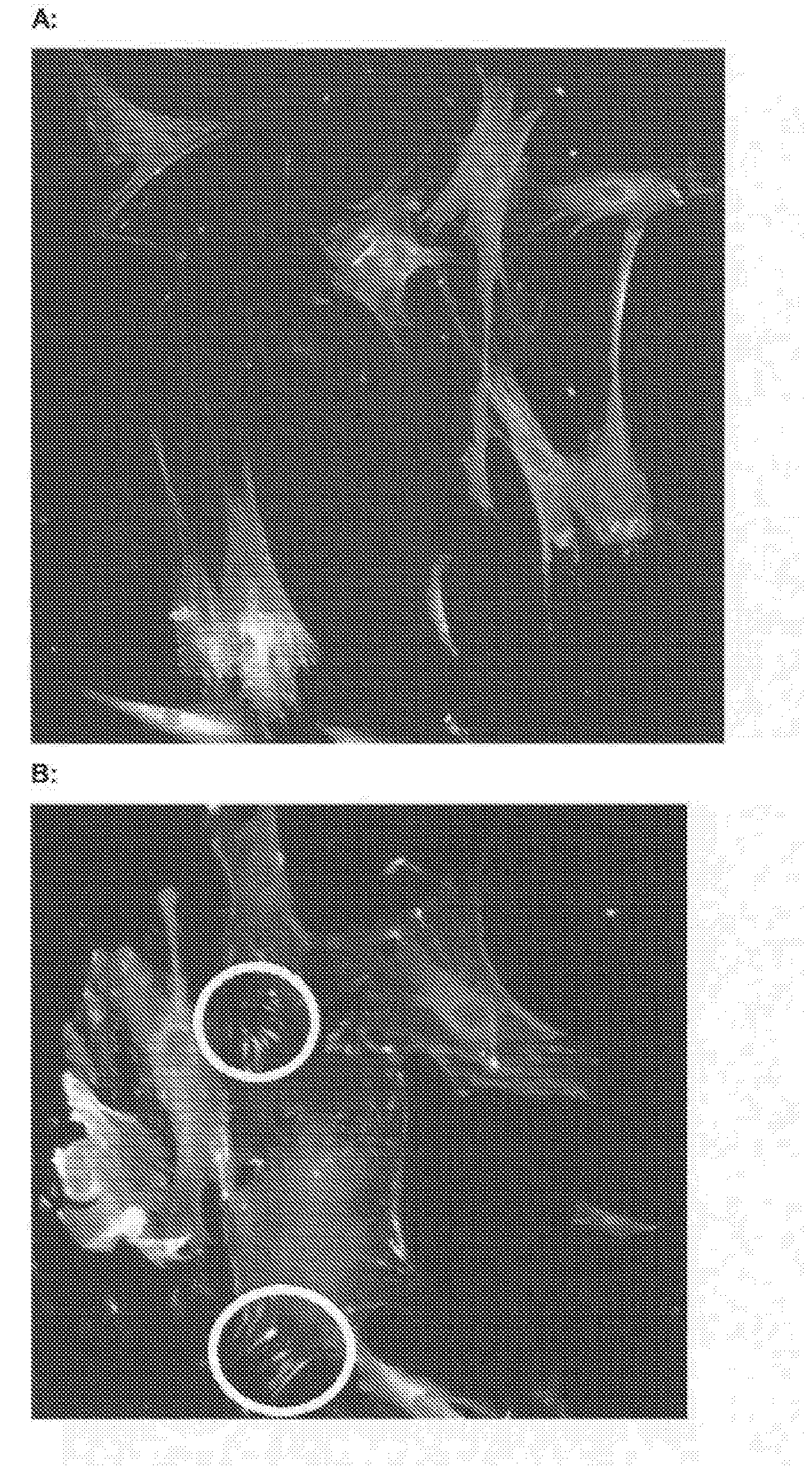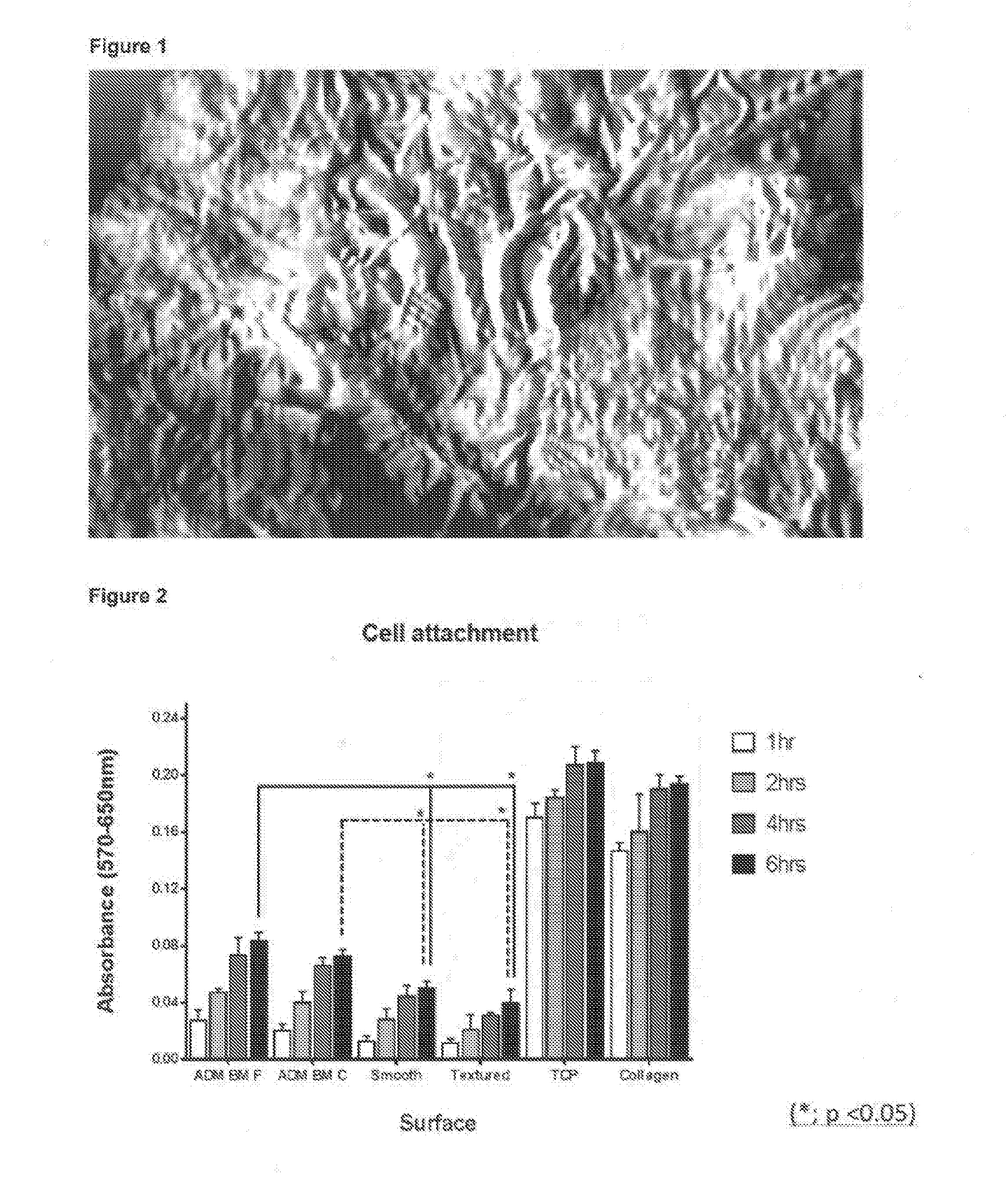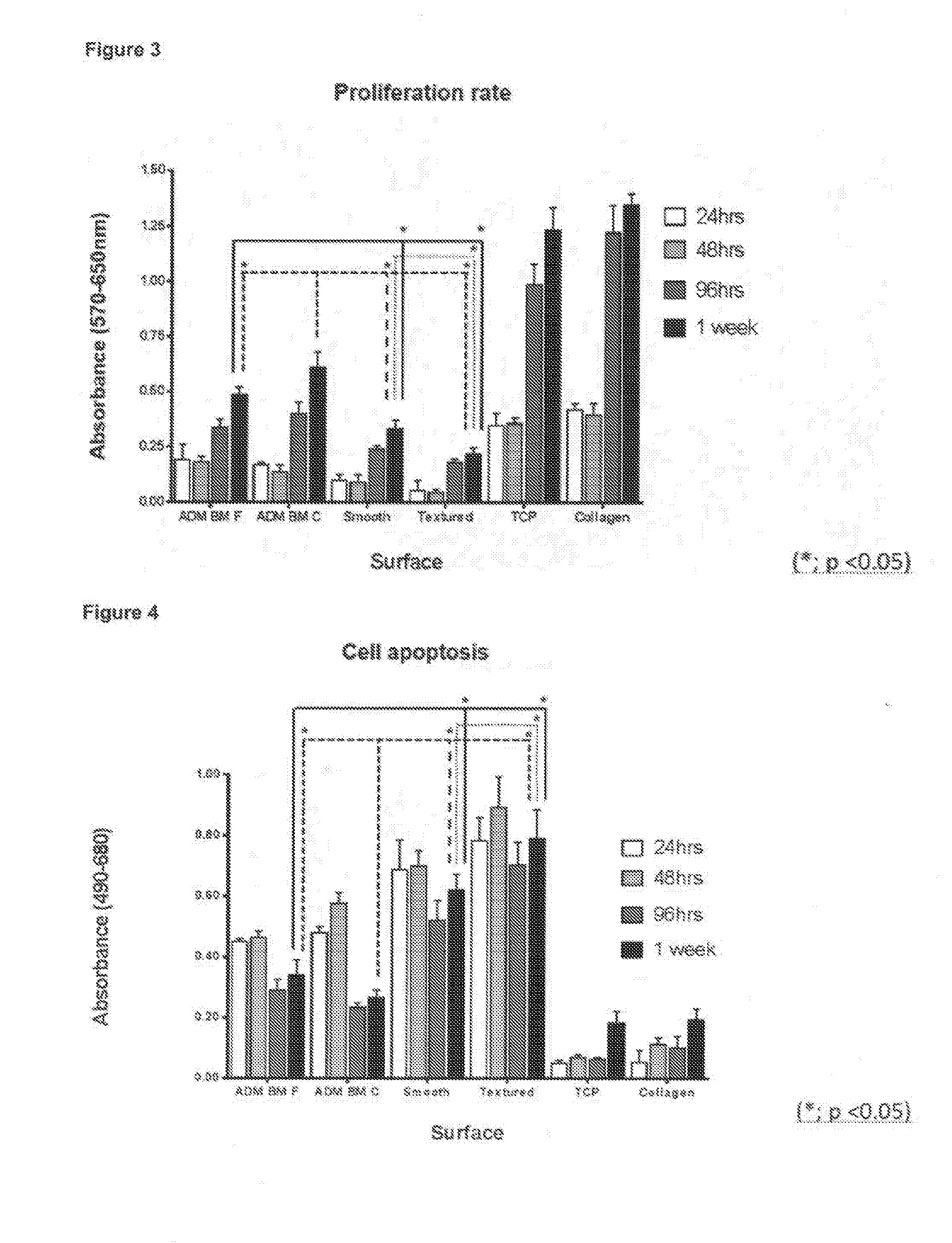Textured surfaces for breast implants
- Summary
- Abstract
- Description
- Claims
- Application Information
AI Technical Summary
Benefits of technology
Problems solved by technology
Method used
Image
Examples
example 1
Production of ADM BM PDMS F—Fabricated Implant Surface by Grayscale Lithography of Acellular (Decellularised) Dermal Matrix Pattern and Reproduction in Silicon by Modified Deep Reactive Ion Etching (DRIE) to Create a Template Before Creating Stamps of ADM BM Pattern in PDMS
Imaging the ADM BM Surface
[0458]The basement membrane (BM) side of the ADM BM surface is distinguished from dermal side through visually checking the tissue for roughness and a buff-colour. Further, BM characteristically repels water and the contact angle of the water is higher than on BM side than PD side. The samples were then placed BM side up onto microscope slides and allowed to slowly air dry at 4° C. for 24 hours. Over one hundred 90 μm×90 μm2 AFM scans were conducted in different areas of the ADM sample, on a number of different samples.
Preparing an Electronic File From Height Information of Grayscale AFM Images
[0459]The raw images from the AFM database were loaded into the following scanning probe analysi...
example 2
Creation of ADM BM C—Casting of Acellular Dermal Matrix in PDMS
Preparation of Acellular Dermal Matrix (ADM)
[0464]ADM washed in sterile deionised water×3 and attached BM side up onto microscope slide and allowed to slowly air dry for 24 hours at 4° C. Basement membrane (BM) side of ADM is distinguished from dermal side through visually checking the tissue for roughness and a buff-colour. Further, BM characteristically repels water and the contact angle of the water is higher than on BM side than RD side.
[0465]To allow easy peeling of PDMS from ADM BM, the ADM was silanized. Silanization performed by placing ADM in vacuum desiccator on a steel-meshed platform with 100 ul of the fluorosilane TMCS in a 3 cm diameter petri dish beneath the ADM. The vacuum was pumped for 30 seconds-1 min until the TMCS is visibly beginning to bubble and evaporate. At this stage the desiccator is held under vacuum for 10 minutes to allow the TMCS to silanize the ADM surface. The ADM is then rea...
example
BDF's on ADM BM C After 6 Hours
[0521]As Seen in FIG. 14, after 6 hours BDF's on ADM BM C according to the invention have attached and are beginning to spread on the surface (white circle indicates a BDF which is displaying typical fibroblast spread morphology)
[0522]FIG. 15 shows Scanning Electron Microscope (SEM) images of BDF's on an ADM BM surfaces according to the invention after 24hrs (A) and 48 hours (B, C and D). It is clear to see the spread morphology of the cells on the ADM surface (white circles indicate BDF's which are displaying typical fibroblast spread morphology).
Discussion
[0523]ADM BM surface has been comprehensively characterized using a variety of imaging and measuring instruments. Commercially available smooth (Mentor Smooth) and textured (Mentor Textured) implants have also been characterized using the same methods, and have been compared to ADM BM. Extensive quantitative and qualitative data on all surfaces has been gathered, and a number of significant and stri...
PUM
| Property | Measurement | Unit |
|---|---|---|
| Length | aaaaa | aaaaa |
| Length | aaaaa | aaaaa |
| Length | aaaaa | aaaaa |
Abstract
Description
Claims
Application Information
 Login to View More
Login to View More - R&D
- Intellectual Property
- Life Sciences
- Materials
- Tech Scout
- Unparalleled Data Quality
- Higher Quality Content
- 60% Fewer Hallucinations
Browse by: Latest US Patents, China's latest patents, Technical Efficacy Thesaurus, Application Domain, Technology Topic, Popular Technical Reports.
© 2025 PatSnap. All rights reserved.Legal|Privacy policy|Modern Slavery Act Transparency Statement|Sitemap|About US| Contact US: help@patsnap.com



